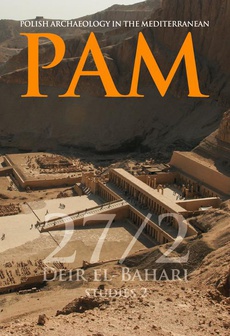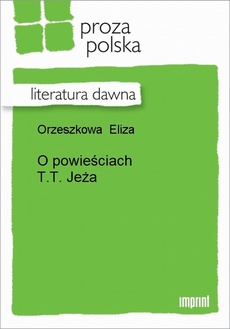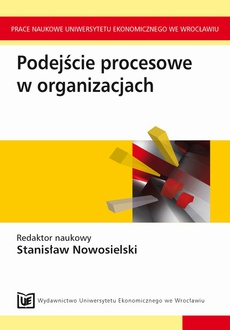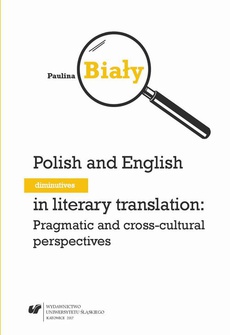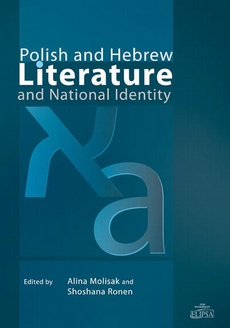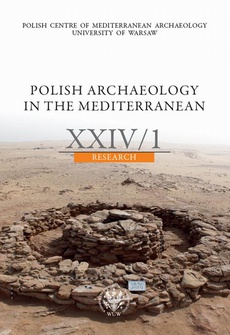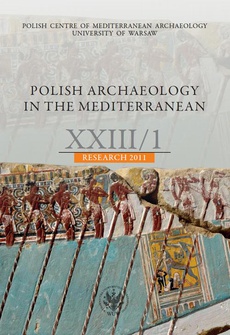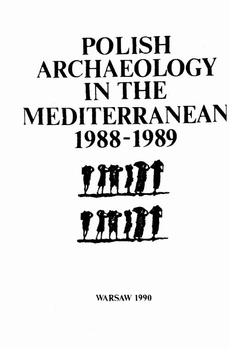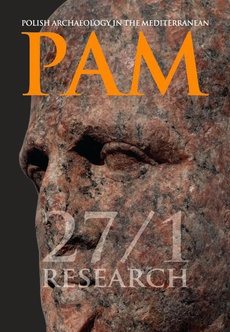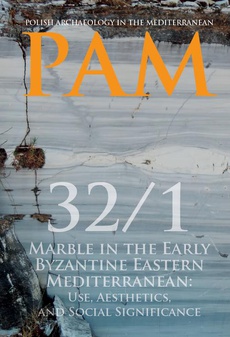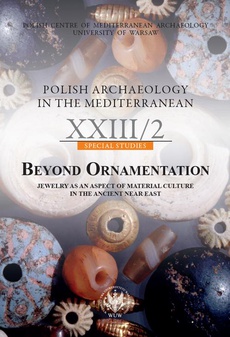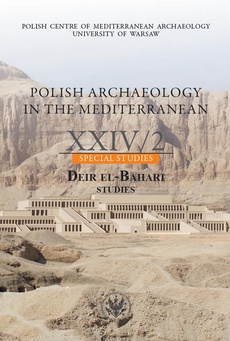POLECAMY
Polish Archaeology in the Mediterranean 27/2
Deir el-Bahari Studies 2
Redakcja:
Wydawca:
Format:
ibuk
Polska archeologia na Morzu Śródziemnym 27/2. Studia w Deir el-Bahari 2
Deir el-Bahari Studies 2 to drugi fascykuł rocznika (PAM 27/2), poświęcony pracom badawczym prowadzonym w świątyni królowej Hatszepsut w Deir el-Bahari. W tomie zgromadzono 18 artykułów dotyczących rozmaitych aspektów działalności ludzi w Deir el-Bahari i okolicach.
Tematyka wykracza poza kwestie związane bezpośrednio ze świątynią, która znajduje się w centrum polskich prac badawczych oraz konserwatorsko-restauratorskich. Wielodyscyplinarne artykuły dotyczą archeobotaniki (Nathalie Beaux, o archeobotanicznych pozostałościach z niedawno odkrytego depozytu fundacyjnego Totmesa III), archeozoologii (Kamila Braulińska, o wątpliwościach związanych z identyfikacją gatunku ptaka przedstawionego w dekoracji reliefowej ze świątyni), bioarcheologii (Roselyn Campbell, analiza szczątków ludzkich z pochówków znalezionych na terenie kompleksu) oraz badań specjalistów z dziedziny rentgenologii i tomografii komputerowej (Salima Ikram, Carlos Prates, Sandra Sousa i Carlos Oliveira, opracowanie szeregu mumii z nekropolii datowanej na Trzeci Okres Przejściowy odkrytej w ruinach Kaplicy Hatszepsut).
Badaniom tych mumii poświęcone są też cztery inne artykuły: prosopograficzne studium Cynthii May Sheikholeslami o rodzie kapłanów Montu, opracowanie Frédérica Payraudeau dotyczące zestawów trumiennych z czasów od XXII do XXV Dynastii oraz dwa uzupełniające się studia lingwistyczne Rytuałów Dnia i Nocy zapisanych na trumnach Heresenesa i Nespakaszutiego z tego kompleksu, autorstwa odpowiednio Ernesta Graefego oraz Kennetha Griffina.
Prezentacja zawarta w tym tomie to najpełniejsze jak dotąd przedstawienie materiału związanego z nekropolą Trzeciego Okresu Przejściowego z terenu świątyni. Artykuły o charakterze archeologicznym dotyczą rozmaitych kwestii związanych z architekturą kompleksu Hatszepsut.
Korzystając z nowych danych archeologicznych, Sergio Alarcón Robledo powraca do kwestii pierwotnej aranżacji Górnego Dziedzińca świątyni. Teresa Dziedzic rozważa logistyczne kwestie związane z dostarczeniem fałszywych wrót na Górny Dziedziniec. Natomiast studium dipinti z komory odciążającej nad świątynną Salą na Barkę daje Mirosławowi Barwikowi asumpt do dyskusji nad rzemieślnikami pracującymi przy dekoracji sanktuarium. Kenneth Griffin przedstawia dwa fragmenty reliefów świątynnych znajdujące się obecnie w Egypt Centre w Swansea, które niegdyś stanowiły część dekoracji świątyni. Opracowanie Edyty Kopp dotyczy dwóch bloków, które autorka umieszcza w kontekście przedstawień boskich procesji z westybułu Kaplicy Hatszepsut. Anastazja Stupko-Lubczyńska omawia inskrybowane podstawy naczyń z reliefów świątynnych, podczas gdy Zbigniew Szafrański daje przegląd wszystkich fragmentów królewskich posągów w kształcie Ozyrysa (tzw. ozyriaków) pochodzących z badań w Deir el-Bahari. Nathalie Beaux, Mariusz Caban i Dawid Wieczorek przedstawiają niedawne odkrycie podwójnego depozytu fundacyjnego Totmesa III z terenu świątyni. Studia materiałowe prezentują Adrianna Madej, która przygląda się stemplowanym cegłom Amenhotepa I z Deir el-Bahari, oraz Marta Kaczanowicz, opracowująca lokalną typologię glinianych figurek ushebti pochodzących z zasypu grobów MMA 1151 i MMA 1152 w pobliskim Sheikh Abd el-Gurna.
Tom uzupełnia uaktualniony plan świątyni Hatszepsut opatrzony indeksem wszystkich elementów architektonicznych badanego kompleksu.
Publikacja na licencji Creative Commons Uznanie autorstwa 3.0 PL (CC BY 3.0 PL) (pełna treść wzorca dostępna pod adresem: http://creativecommons.org/licenses/by/3.0/pl/legalcode).
*********
The second fascicle of the journal, special volume Deir el-Bahari Studies 2 (PAM 27/2), brings together 18 papers on manifold aspects of human cognitive behavior in Deir el-Bahari and the neighboring areas. Topics reach beyond the issues directly connected with the New Kingdom Temple of Hatshepsut, which is the core of Polish research and conservation work in Deir el-Bahari. The multidisciplinary contributions include studies by botanists (Beaux, on botanical remains from a recently discovered Tuthmosis III foundation deposit), zoologists (Braulińska, discussing the identification dilemma concerning a bird species represented in the temple decoration), bioarchaeologists (Campbell, on human remains from burials discovered in the Temple) and medical specialists in X-ray and CT-scanning (Ikram, Prates, Sousa and Oliveira, on a medley of mummies from the Third Intermediate Period cemetery in the ruins of the temple). Four studies complement the examination of Third Intermediate Period mummies from the Chapel of Hatshepsut: Sheikholeslami’s study of the Montu priestly families as attested in the material, Payraudeau’s assessment of the funerary assemblages from the Chapel dated to the Twenty-second to Twenty-fifth Dynasties, and two linguistic approaches to the Rituals of Day and Night on the coffins of Heresenes and Nespaqashuty, by Graefe and Griffin, respectively.
Pending a separate volume dedicated to this material, this is the most comprehensive presentation so far of this funerary complex from the Deir el-Bahari temple site. Archaeological papers concern various aspects of the architecture of the Temple. Robledo revisits the question of the original arrangement of the Upper Courtyard of the Temple, Dziedzic considers the issue of how false doors would have been transported to their position inside the Temple on the Upper Courtyard, whereas Barwik discusses dipinti from the relieving chamber above the Bark Hall of the Temple and their significance for understanding the craftsmanship involved in the construction and decoration of the temple. Griffin presents two relief fragments from the collection of the Egypt Centre in Swansea that were originally part of the temple decoration, while Kopp studies two blocks with relief decoration in the context of their place in the depictions of divine processions in the vestibule of the sanctuary’s Chapel of Hatshepsut. Stupko-Lubczyńska dedicates her paper to inscribed pot-stands from the temple decoration and Szafrański studies the fragments of royal statues in the form of the god Osiris coming from various places in Deir el-Bahari. Beaux, Caban and Wieczorek present a recent discovery of a double foundation deposit in the Hathor Shrine of Tuthmosis III at the site. Material studies are undertaken by Madej, who looks at stamped bricks of Amenhotep I from Deir el-Bahari, and by Kaczanowicz, who contributes a typology of the clay funerary figurines found in the fill of tombs MMA 1151 and MMA 1152 at nearby Sheikh Abd el-Gurna.
Complementing the fascicle is an updated comprehensive plan of the Temple of Hatshepsut with an index to locations inside the complex.
The publication is licensed under the Creative Commons Attribution-Share Alike 3.0 Poland license (CC BY 3.0 PL) (full license available at: http://creativecommons.org/licenses/by/3.0/pl/legalcode).
*********
Mgr Iwona Liliana Zych (ORCID 0000-0002-5341-6654) – od 1997 roku asystent naukowy w Zakładzie Studiów Afrykańskich Centrum Archeologii
Śródziemnomorskiej Uniwersytetu Warszawskiego, redaktor naczelna rocznika "Polish Archaeology in the Mediterranean". Zainteresowania badawcze: zwyczaje pogrzebowe i nekropole w basenie Morza Śródziemnego w okresie grecko-rzymskim; zabytki drewniane z Egiptu grecko-rzymskiego — interpretacja funkcji, kwestie warsztatu i aspekty społeczno-ekonomiczne użytkowania; gliniane lampy oliwne hellenistyczne i rzymskie (studia nad pochodzeniem oraz aspektami społeczno-ekonomicznymi użytkowania) oraz rekonstrukcja zagospodarowania
przestrzennego i urbanistycznego hellenistycznego i rzymskiego portu w Berenike nad Morzem Czerwonym.
| Rok wydania | 2020 |
|---|---|
| Liczba stron | 394 |
| Kategoria | Publikacje darmowe |
| Wydawca | Uniwersytet Warszawski |
| Numer wydania | 1 |
| Język publikacji | angielski |
| Informacja o sprzedawcy | ePWN sp. z o.o. |
Ciekawe propozycje
Spis treści
| List of contributors | 7 |
| Abbreviations | 9 |
| Preface | |
| Zbigniew E. Szafrański | 11 |
| Index of locations in the Temple of Hatshepsut (with plan) | 12 |
| The original arrangement of the Upper Courtyard of the Temple of Hatshepsut in the light of recent archaeological results | |
| Sergio Alarcón Robledo | 17 |
| Dipinti in the relieving chamber above the Bark Hall of the Hatshepsut Temple at Deir el-Bahari | |
| Mirosław Barwik | 33 |
| A new double foundation deposit in the Hathor Shrine of Tuthmosis III at Deir el-Bahari | |
| Nathalie Beaux, Mariusz Caban, and Dawid F. Wieczorek | 51 |
| Remarkable botanical remains from a new foundation deposit in the Hathor shrine of Tuthmosis III at Deir el-Bahari | |
| Nathalie Beaux | 71 |
| The secretarybird dilemma: identifying a bird species | |
| from the Temple of Hatshepsut at Deir el-Bahari | |
| Kamila Braulińska | 83 |
| Preliminary assessment of human remains from the Temple of Hatshepsut at Deir el-Bahari | |
| Roselyn A. Campbell | 117 |
| Transporting false doors at the construction site of the Temple of Hatshepsut at Deir el-Bahari | |
| Teresa Dziedzic | 129 |
| The Ritual of the Hours of the Day on the inner vault | |
| of the qrsw-coffin of Nes(pa)qashuty from Deir el-Bahari | |
| Erhart Graefe | 143 |
| The Ritual of the Hours of the Night on the coffins of Heresenes and Nespaqashuty from Deir el-Bahari | |
| Kenneth Griffin | 183 |
| Two relief fragments from the Temple of Hatshepsut at Deir el-Bahari in the Egypt Centre, Swansea | |
| Kenneth Griffin | 225 |
| A medley of mummies from Deir el-Bahari | |
| Salima Ikram, Carlos Prates, Sandra Sousa, and Carlos Oliveira | 237 |
| Clay funerary figurines from tombs MMA 1151 and MMA | 1152 |
| in Sheikh Abd el-Gurna | |
| Marta Kaczanowicz | 259 |
| The gods bestow life. New material for the study of divine processions in the Vestibule of the Chapel of Hatshepsut in Deir el-Bahari | |
| Edyta Kopp | 275 |
| Stamped bricks of Amenhotep I from Deir el-Bahari | |
| Adrianna Madej | 291 |
| Third Intermediate Period funerary assemblages from the Chapel of Hatshepsut. Part 1: Coffins and cartonnages | |
| from the Twenty-second to Twenty-fifth Dynasties | |
| Frédéric Payraudeau | 301 |
| Montu priestly families at Deir el-Bahari in the Third Intermediate Period | |
| Cynthia May Sheikholeslami | 325 |
| Inscribed pot-stands represented in the Temple of Hatshepsut at Deir el-Bahari | |
| Anastasiia Stupko-Lubczyńska | 365 |
| Remarks on royal statues in the form of the god Osiris | |
| from Deir el-Bahari | |
| Zbigniew E. Szafrański | 375 |

